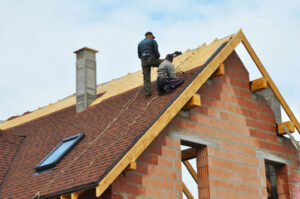Types of Commercial Roofing
Commercial Roofing is a process that involves the application of a covering or coverings to a building. The roofing material may be made of plastic, metal or other materials. Metal roofs are characterized by durability, longevity, high resistance and impermeability. Plastic roofs are also characterized by low cost, ease of installation and long service life. Built-up roofing is a type of roof used in residential and commercial buildings. It is typically made from bitumen, asphalt or a combination of these materials.
 It has been a common choice for more than 100 years. Today, it is a very durable and low-maintenance roofing system. These roofs are most commonly installed on flat or low-sloped commercial properties. These membranes have the benefit of being resistant to heat and UV rays. This can reduce cooling costs in hot climates. They are also fire-resistant.
It has been a common choice for more than 100 years. Today, it is a very durable and low-maintenance roofing system. These roofs are most commonly installed on flat or low-sloped commercial properties. These membranes have the benefit of being resistant to heat and UV rays. This can reduce cooling costs in hot climates. They are also fire-resistant.
However, their lifespan is short compared to other types of roofing. One of the most popular applications for low-sloped roofs is TPO. Built-up roofs are usually installed in large sheets. They have a lower profile than shingles but require more structural support. Another popular option is modified bitumen. TPO roofing is an energy-saving single-ply membrane roofing system. The material resists damage from ultraviolet light, water, and chemicals. It’s also resistant to punctures and tears.
In addition, it has excellent reflectivity. This makes it perfect for flat roofs. However, its durability and longevity are dependent on the quality of the material you use. You should research the different manufacturers and their warranties to ensure that you’re getting the best product for your needs. TPO is typically installed with a fabric scrim to protect the top layer of the membrane. The scrim prevents damage from the laying process and helps maintain the material’s structure.
TPO is often available in white, gray, or black depending on the thickness. Some varieties are ENERGY STAR rated. Spray polyurethane foam (SPF) is a lightweight roofing material that is waterproof, durable, and easy to install. It is a great option for commercial buildings, as it offers long-term protection. SPF is made up of billions of cells. The foam’s close-cell structure prevents water from traveling through it, and it also prevents leaks. SPF is typically installed over an existing roof. The existing roof must be prepared during the installation process, and the contractor will supply the materials, tools, and labor.
Before the application process, the surface must be clean and dry. To achieve success, the roofing system needs to be properly fastened to the substrate, and the weather must be ideal for the application. Contractors usually use a hand-held thermometer to monitor the weather conditions. They can also apply a windshield to reduce overspray.
Single-ply membranes for commercial roofing are a popular type of roofing material. They offer several advantages over other types of roofs, including flexibility and durability. These roofing systems are also considered environmentally friendly.
A single-ply roof is made of flexible sheets of synthetic polymer. It offers strong tear resistance and can be used to cover low-sloped roofs. In addition, the membrane has an added layer of protection against acid rain and chemical outflows.
Single-ply membranes for commercial roofing come in three main groups. There are thermoplastic polyolefin (TPO), synthetic rubber, and mechanically fastened. Each of these membranes has its own unique features. However, the TPO has the largest market share among these options. The thermoplastic polyolefin is the most widely used single-ply membrane for commercial roofing. This material has a long lifespan and can be attached using adhesives.
There are a number of benefits to installing a standing seam metal roof. Not only are they durable and long-lasting, they also help to save you money on energy bills. They’re great for homes in areas that are susceptible to wildfires. In addition, they’re aesthetically pleasing, which can increase your home’s curb appeal.
There are two main types of metal roofing systems. The first is the screw down panel. This type of roof uses metal panels, usually coated with an aluminum elastomer. It’s also referred to as an exposed-fastener system.
A more advanced alternative is the concealed-fastener system. These systems require special installation techniques, a bit more money, and longer warranties. However, the benefits are greater because the fasteners are hidden, and your roof will last a lot longer.
